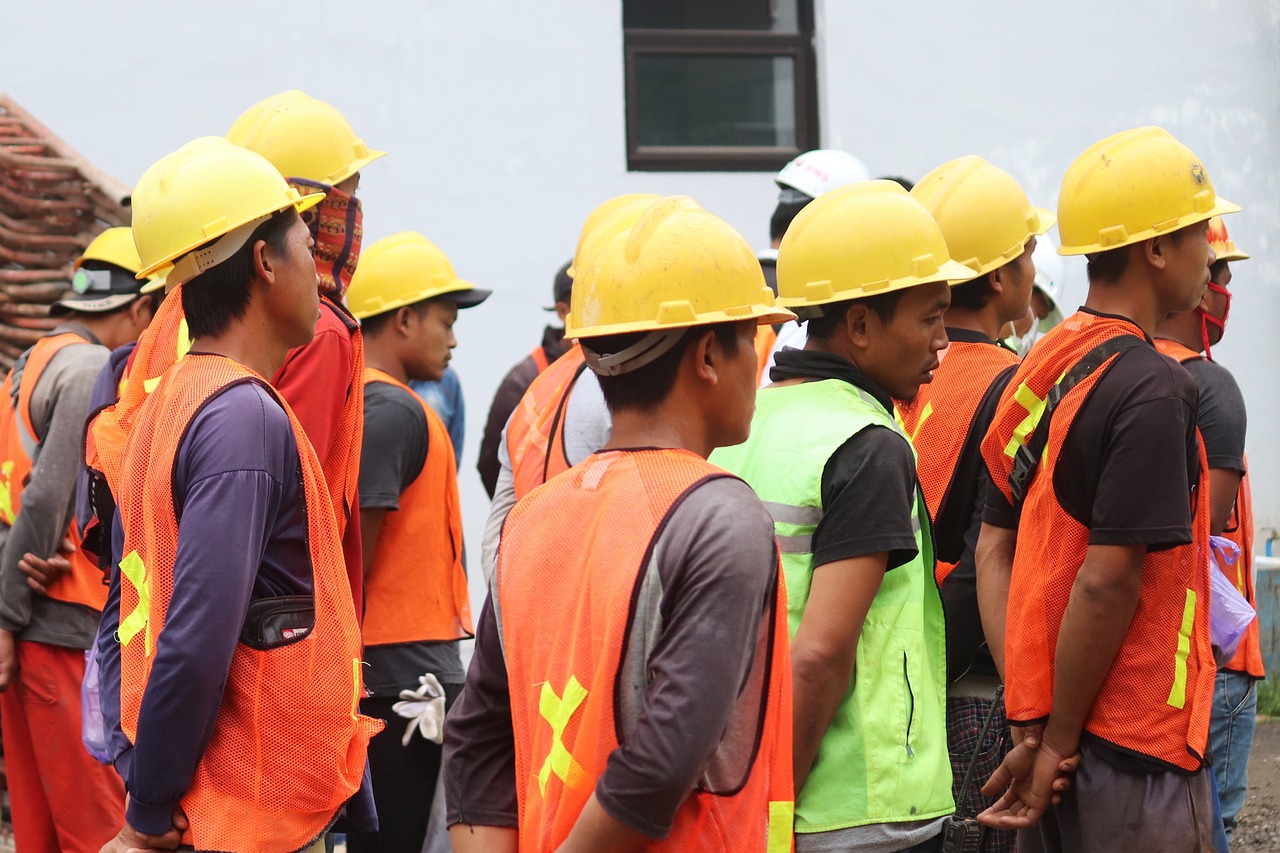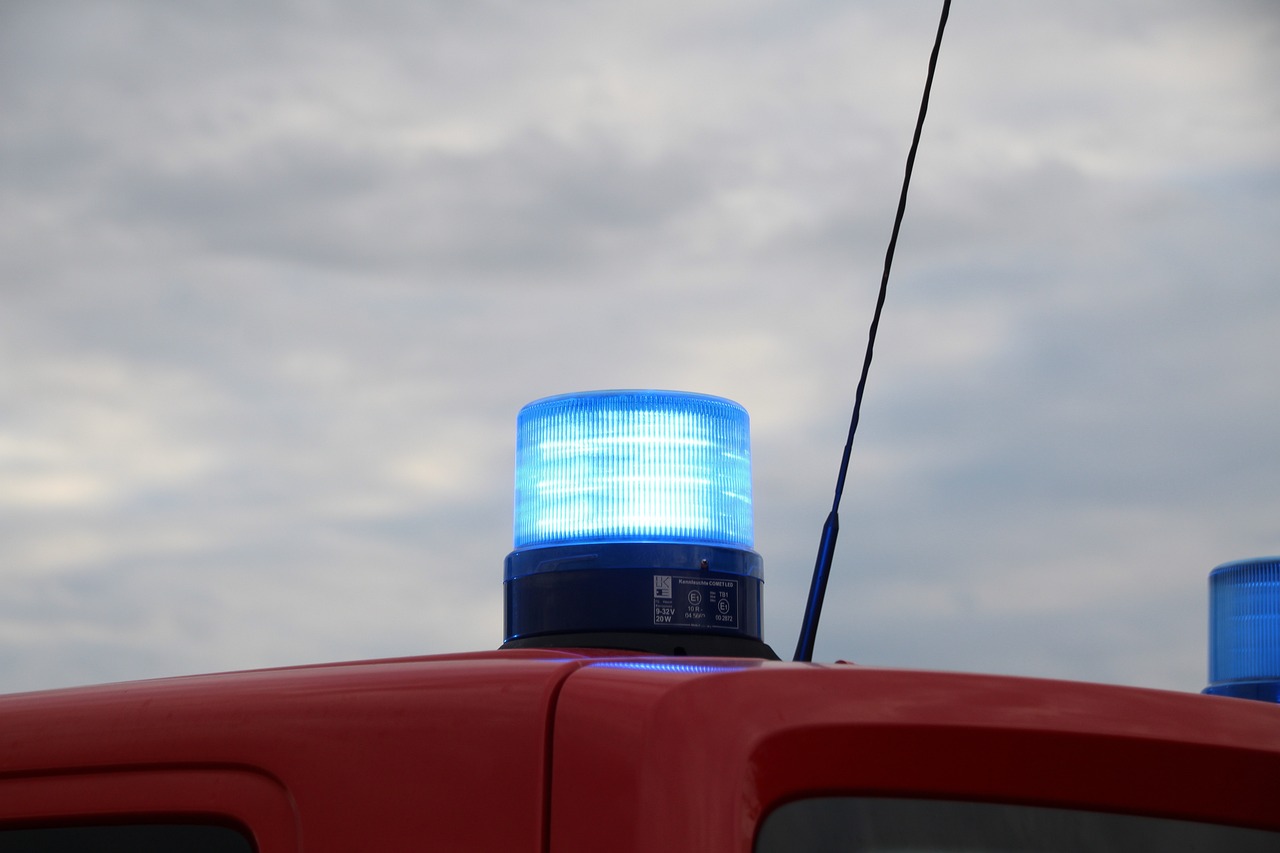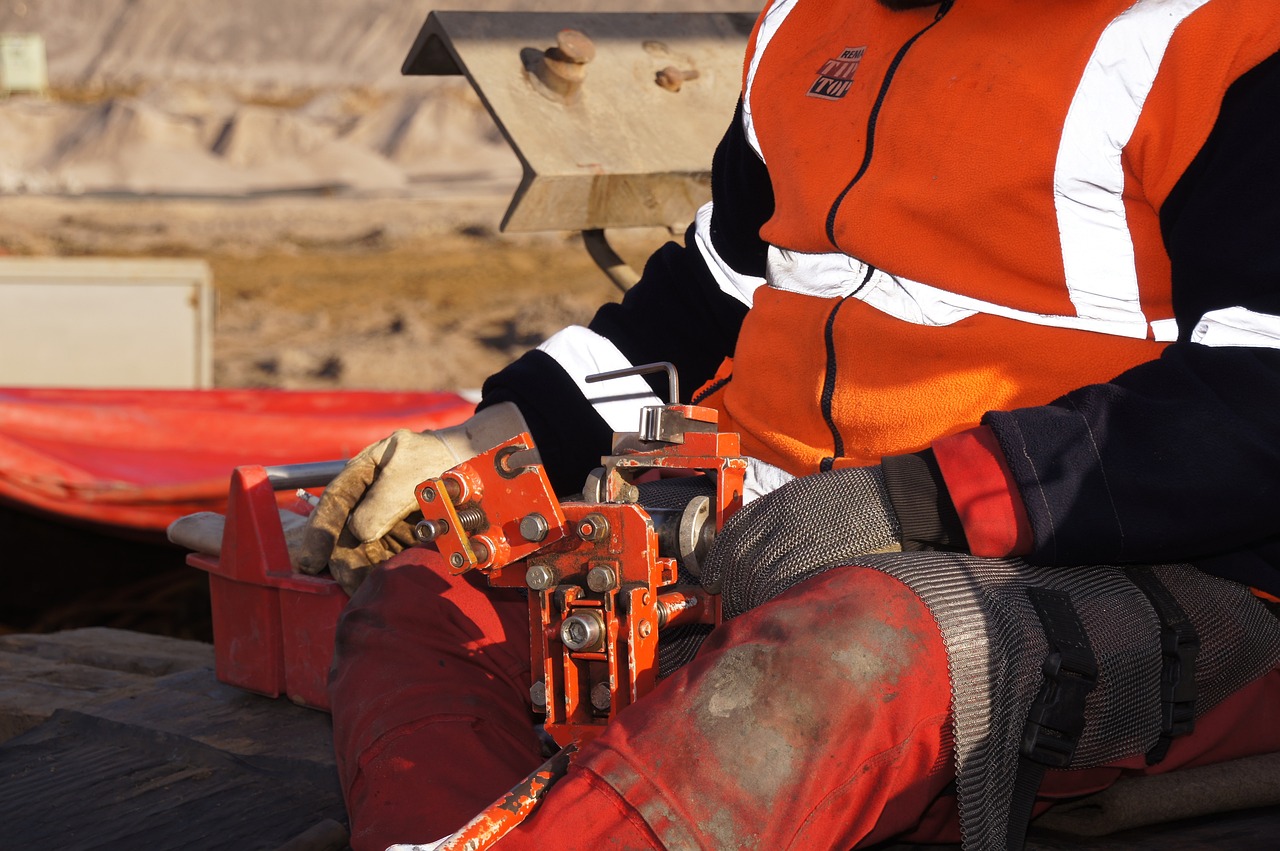Family Safety During Terror Attacks
In today's unpredictable world, the safety of our families is more important than ever. The thought of a terror attack can be frightening, but understanding how to prepare can significantly alleviate that fear. This article explores essential strategies and preventive measures families can take to ensure safety during potential terror attacks, emphasizing preparedness, communication, and community support. By taking proactive steps, families can create a sense of security and resilience that will empower them in the face of adversity.
Before we dive into safety strategies, it’s crucial to understand the landscape of terror threats. Terror attacks can stem from various motivations, including political, ideological, or religious beliefs. These motivations can manifest in different forms, such as bombings, shootings, or cyber-attacks. Families must be aware of these threats to foster a culture of vigilance without succumbing to fear. Knowing the methods used by terrorists can help families contextualize the importance of safety measures. For instance, understanding that crowded places are often targets can lead families to be more cautious in such environments.
One of the cornerstones of family safety is developing a comprehensive emergency plan. This plan should detail communication protocols, evacuation routes, and specific roles for each family member. For example, consider the following key components:
- Communication Protocols: Establish a primary and secondary method of communication. This could be through mobile phones, text messages, or even social media platforms.
- Evacuation Routes: Identify multiple routes to safety, both from your home and from regular locations like schools or workplaces.
- Meeting Points: Designate safe meeting spots where your family can regroup if separated.
By laying out these details, you create a roadmap that can guide your family during a crisis, reducing panic and confusion.
Designating safe spaces within your home and community can provide refuge during an attack. Think of these areas as your family's sanctuary. In your home, this could be a room with no windows, a sturdy door, and access to essential supplies. In your community, consider locations like community centers or designated shelters. Preparing these areas effectively involves ensuring they are stocked with necessities such as water, non-perishable food, and first-aid supplies. Regularly check and update these supplies to ensure they are ready when needed.
Simple modifications to your home can enhance safety significantly. Start by securing doors and windows with high-quality locks, and consider adding security cameras or alarm systems. These enhancements not only deter potential intruders but also provide peace of mind. Additionally, consider creating a family emergency kit that includes items like flashlights, batteries, and a portable phone charger. This kit can be a lifesaver during a crisis when access to power and communication may be limited.
Leveraging community resources can bolster family safety. Many local organizations and initiatives are designed to support families during emergencies. For instance, local police departments often provide safety workshops, while community centers may offer resources for emergency preparedness. Engaging with these resources not only equips your family with essential knowledge but also fosters a sense of community solidarity. Remember, in times of crisis, neighbors can be your first line of support.
Regularly practicing emergency drills can prepare families for unexpected situations. Just like fire drills at school, these practice sessions ensure everyone knows their roles during a crisis. Set aside time each month to run through different scenarios, whether it’s an evacuation drill or a lockdown procedure. This practice helps build confidence and reduces panic when real situations arise. Moreover, involving children in these drills teaches them valuable skills that can empower them to act decisively in emergencies.
Accessing reliable information during a crisis is vital. In an age where misinformation can spread like wildfire, knowing where to find credible news sources is crucial. Official government websites, local news outlets, and emergency management agencies are excellent resources for real-time updates. Encourage your family to stay informed about current events and potential threats in your area. This knowledge not only keeps you prepared but also helps you distinguish between fact and fiction when it matters most.
Technology can enhance family safety in numerous ways. There are various apps and tools available that provide alerts, communication, and location tracking during emergencies. For example, apps like FEMA and Red Cross offer real-time alerts and safety tips. Additionally, consider using family locator apps to keep track of each other’s whereabouts in crowded places. These tools can be invaluable during emergencies, allowing for quick communication and coordination.
Establishing strong connections with neighbors can create a support network that enhances safety. Organize community meetings to discuss safety concerns and share resources. Building relationships with those around you not only fosters a sense of belonging but also ensures that help is readily available during crises. Consider forming a neighborhood watch or participating in local safety initiatives. Remember, in times of need, a strong community can be your greatest ally.
Q: What should I include in my family emergency kit?
A: Your emergency kit should include water, non-perishable food, a flashlight, batteries, a first-aid kit, and any necessary medications.
Q: How often should we practice our emergency drills?
A: It’s recommended to practice emergency drills at least once a month to keep everyone familiar with the procedures.
Q: What are some reliable sources for emergency information?
A: Official government websites, local news outlets, and emergency management agencies are great sources for credible information during a crisis.

Understanding Terror Threats
In today's world, the specter of terrorism looms large, affecting countless families and communities. But what exactly are terror threats, and how can they impact our lives? Understanding the different types of terror threats is crucial for families to develop effective safety strategies. Terrorism can manifest in various forms, driven by a myriad of motivations, including political, ideological, or religious beliefs. Each type of threat can employ distinct methods, which can range from bombings and armed attacks to cyber-terrorism and biological threats. Recognizing these threats is the first step in ensuring our safety and preparedness.
One of the most alarming aspects of terror threats is their unpredictability. Families can find themselves in harm's way without any warning, making it essential to stay informed and vigilant. For instance, consider the recent trend of "lone wolf" attacks, where individuals, often radicalized online, carry out acts of violence independently. This method can be particularly challenging to prevent, as it involves no organized group and can occur in public spaces, such as shopping malls, schools, or concerts. The psychological impact on families can be profound, as they grapple with feelings of fear and uncertainty about their safety.
Moreover, understanding the motivations behind these acts can help families contextualize the threat. Terrorists often seek to instill fear, disrupt societal norms, and provoke governmental responses. This can lead to a cycle of violence and retaliation, further endangering innocent lives. By recognizing that these motivations are rooted in complex social and political issues, families can foster a more nuanced understanding of the situation, which can help mitigate fear and anxiety.
To illustrate the various types of terror threats, consider the following table:
| Type of Terror Threat | Motivation | Common Methods |
|---|---|---|
| Political Terrorism | Ideological beliefs | Bombings, armed attacks |
| Religious Terrorism | Religious extremism | Suicide bombings, mass shootings |
| Cyber Terrorism | Disruption of systems | Hacking, data breaches |
| Biological Terrorism | Fear and panic | Release of pathogens |
In conclusion, understanding terror threats is not just about recognizing the dangers but also about empowering families to take proactive steps towards safety. By educating ourselves about the types and motivations of these threats, we can foster a sense of preparedness and resilience. Families that communicate openly about their concerns and develop safety plans together will be better equipped to handle the uncertainties of our world. Remember, knowledge is power, and in the face of fear, staying informed is one of the most effective tools we have.

Creating an Emergency Plan
Creating an emergency plan for your family is not just a good idea; it’s a vital step toward ensuring your safety during potential terror attacks. Think of it as your family’s safety blueprint—it lays out the steps to take when chaos strikes. The first thing to consider is communication. Establishing clear communication protocols can make all the difference. For instance, decide on a designated meeting point where everyone can gather if you become separated. This could be a nearby park, a friend's house, or even a local landmark that everyone knows. You might also want to create a group chat or use a family messaging app to keep everyone in the loop during emergencies.
Next, you’ll want to outline evacuation routes. This means knowing how to get out of your home and your neighborhood quickly and safely. Consider mapping out multiple routes in case one is blocked. It's also wise to familiarize your family with these routes by practicing them. Remember, in a panic situation, familiarity breeds confidence. You can even create a simple table to visualize your evacuation routes:
| Location | Route 1 | Route 2 |
|---|---|---|
| Home | Main Street to Elm Road | Back Alley to Oak Avenue |
| School | North Park to 2nd Street | East Side to 5th Avenue |
Don’t forget to include a list of emergency contacts in your plan. This should consist of family members, close friends, and local emergency services. Keep this list in a visible spot, like on your fridge or in your family’s emergency kit. It’s also a good idea to have a printed copy in case your phone dies or you lose service. Make sure everyone in the family knows how to access this information quickly.
Lastly, a successful emergency plan isn’t static; it needs to be regularly updated and practiced. Schedule family meetings to review your plan and ensure everyone is comfortable with their roles. This can be a good opportunity to address any questions or concerns. By keeping the lines of communication open and encouraging questions, you foster an environment of preparedness and resilience. After all, when it comes to safety, being prepared is the best defense!
- What should I include in my emergency kit? Your emergency kit should include water, non-perishable food, a flashlight, batteries, a first-aid kit, and important documents.
- How often should I review my emergency plan? It’s best to review your emergency plan at least twice a year, or whenever there’s a significant change in your family situation.
- What if my family members are not together during an emergency? Having a designated meeting point and a communication plan can help reunite your family quickly.

Identifying Safe Spaces
In the face of potential terror attacks, one of the most critical steps families can take is to identify and prepare safe spaces. Think of these spaces as your family's personal fortress—places where you can find refuge and feel secure. The key is to choose areas that not only provide physical protection but also foster a sense of calm during chaotic situations. So, where do you start?
First, it's essential to consider both your home and the surrounding community. Within your home, safe spaces should be away from windows and doors, ideally in rooms that can be locked or barricaded if necessary. Basements and interior rooms can serve as effective safe havens. For example, if you have a basement, it can act as a stronghold during an emergency. If you don’t, perhaps a central bathroom or closet can be fortified with supplies.
Moreover, it's not just about your home; your neighborhood can also play a vital role in your family's safety. Identify community centers, schools, or local buildings that are well-constructed and can serve as temporary shelters. These spaces should be equipped with basic supplies and have trained personnel if possible. Here’s a quick checklist of considerations:
- Accessibility: Ensure that your safe space is easy to access for all family members, including children and elderly relatives.
- Supplies: Stock these areas with essential supplies such as water, non-perishable food, first-aid kits, and flashlights.
- Communication: Have a means of communication in these spaces, whether it’s a charged phone or a radio.
Next, think about how to prepare these safe spaces. It's not enough to just identify them; you need to ensure they are ready for use. This means regularly checking supplies, ensuring that doors and windows can be secured, and practicing how to get to these spaces quickly. Involve your family in this process. When everyone knows the plan and understands the importance of these safe spaces, it creates a collective sense of security.
Finally, remember that the emotional aspect of safety is just as important as the physical one. Safe spaces should not only protect you from harm but also help to alleviate fear and anxiety. Consider personalizing these spaces with items that bring comfort, like family photos or favorite toys. This can help transform a stark environment into a haven of safety and reassurance.

Home Safety Modifications
When it comes to ensuring your family's safety, home modifications can play a pivotal role. Think of your home as a fortress; it should be a place where you feel secure and protected. Simple changes can significantly enhance your home’s safety, and they don't have to break the bank. For instance, securing doors and windows is a fundamental step. You might not realize it, but a sturdy door can be your first line of defense against potential threats. Consider investing in high-quality locks and deadbolts, which can make it much harder for intruders to gain access.
Additionally, window security is equally important. Installing window locks or even security film can deter unwanted entry and provide peace of mind. If you have children, it's crucial to ensure that windows are not only secure but also out of their reach. Imagine the relief of knowing that your little ones are safe from accidental falls or, worse, being able to open a window when they shouldn't.
Another effective modification is the installation of security cameras. These devices can serve dual purposes: they act as a deterrent and provide valuable evidence in case of an incident. Placing cameras at strategic locations around your home, especially at entrances, can help you keep an eye on your property. Plus, many modern systems allow you to monitor your home remotely via smartphone apps, giving you that extra layer of security no matter where you are.
It's also wise to consider the exterior of your home. A well-lit environment can discourage suspicious activity. Installing motion-sensor lights around your property can illuminate dark corners and pathways, making it harder for anyone with ill intentions to approach unnoticed. Picture walking up to a house that is brightly lit; it feels less inviting to potential threats, doesn’t it?
Moreover, creating a safe room within your home can provide a secure place for your family during an emergency. This room should be stocked with essentials like food, water, a first aid kit, and communication devices. Think of it as your family's personal bunker, a place where you can regroup and stay safe until the danger has passed.
Incorporating these home safety modifications not only protects your family but also instills a sense of confidence and readiness. Remember, safety is not just about reacting to threats; it’s about taking proactive steps to prevent them. The more prepared you are, the more peace of mind you will have, allowing you to focus on what truly matters—your family's well-being.
- What are the most essential home safety modifications? Start with securing doors and windows, installing security cameras, and enhancing outdoor lighting.
- How can I create a safe room? Choose a room with minimal windows, stock it with essentials, and ensure it has a means of communication.
- Is it expensive to enhance home security? Not necessarily; many effective measures, like securing locks and adding lights, can be done on a budget.

Community Resources
In times of crisis, the strength of a community can make all the difference. Community resources play a vital role in enhancing family safety during potential terror attacks. These resources can range from local organizations that provide emergency assistance to neighborhood watch programs that foster vigilance. Understanding what’s available in your community is crucial for effective preparedness.
Many cities and towns have established emergency response teams that are trained to handle various situations, including terror threats. These teams often conduct workshops and training sessions for families to educate them on safety protocols. For example, local fire departments or police stations may offer classes on first aid, emergency preparedness, and how to respond during a crisis. Participating in these programs not only equips families with essential skills but also helps build relationships with local responders, creating a safer environment.
Additionally, community centers often serve as hubs for information and support. They can provide resources such as:
- Emergency contact lists that include important numbers for local authorities and services.
- Safety workshops focusing on personal safety and community vigilance.
- Support groups for families affected by trauma, offering counseling and peer support.
Moreover, many neighborhoods have established online platforms or social media groups where residents can share information quickly. These platforms can be invaluable during emergencies, allowing neighbors to communicate in real-time about any threats or safety concerns. By leveraging these community connections, families can stay informed and feel more secure in their surroundings.
It's also essential to familiarize yourself with local initiatives aimed at enhancing community safety. For instance, many areas have neighborhood watch programs that encourage residents to look out for one another. These programs not only raise awareness about suspicious activities but also foster a sense of camaraderie among neighbors. When families are connected and supportive of one another, the community becomes a formidable barrier against potential threats.
In summary, community resources are a cornerstone of family safety during terror attacks. By engaging with local organizations, participating in safety programs, and fostering connections with neighbors, families can create a robust support network that enhances their preparedness and resilience. Remember, in the face of uncertainty, a united community is a powerful ally.

Practicing Drills
When it comes to family safety during a terror attack, practicing drills is not just a good idea—it's a necessity. Think of it like a fire drill in school; you wouldn't want to be caught off guard if a real emergency occurs. Regularly rehearsing various scenarios ensures that everyone in your family knows exactly what to do when the unexpected happens. Imagine the peace of mind that comes with knowing your loved ones can react swiftly and effectively in a crisis. You wouldn't want to leave such critical moments to chance, would you?
So, how do you get started with these drills? First, gather your family and discuss the different types of emergencies that could arise. This could include anything from a terror attack to natural disasters. The key is to make sure everyone understands the potential threats and the importance of being prepared. You might want to ask questions like, "What would we do if we heard gunshots?" or "Where would we go if we needed to evacuate our home?" This not only gets everyone thinking but also fosters a sense of teamwork and unity.
Next, create a realistic plan that outlines specific actions for each type of emergency. For instance, if you're simulating a terror attack, designate a safe room in your home where everyone can gather. Make sure everyone knows how to get there quickly. You can even use a simple table to outline the steps for each scenario:
| Emergency Type | Actions to Take | Designated Safe Space |
|---|---|---|
| Terror Attack | Stay calm, gather in the safe room, call 911 | Living Room Closet |
| Natural Disaster | Evacuate to higher ground, grab emergency kit | Neighbor's House |
| Fire | Exit through the nearest door, use fire escape | Backyard |
Once your plan is in place, it’s time to practice! Schedule regular drills, perhaps once every few months, and treat them like a serious event. Turn off distractions like phones and televisions, and immerse yourselves in the scenario. You might even want to time how quickly everyone can reach the safe space. This not only adds an element of urgency but also helps identify any weaknesses in your plan.
It’s also beneficial to involve your neighbors in these drills. After all, safety is often a community effort. By practicing together, you can create a network of support that can be invaluable during a crisis. You could even organize community drills, inviting neighbors to join in and share their own safety tips. This way, you’re not just preparing your family; you’re fostering a culture of safety in your neighborhood.
Remember, the goal of these drills is to make everyone feel confident and capable. Reassure your family that it's okay to feel anxious about these scenarios; the important part is that they know how to respond. After all, practice makes perfect, and in this case, it could make the difference between chaos and calm during a terrifying situation.
So, gather your family, create a plan, and start practicing those drills. You’ll be surprised at how empowering it can be to know that you’re prepared for the unexpected. In the end, it’s all about protecting the ones you love and ensuring that everyone knows their role when it matters most.

Staying Informed
In today's fast-paced world, staying informed is not just a luxury; it's a necessity, especially during crises like terror attacks. Imagine being caught in a situation where every second counts, and the information you have can make all the difference. It's like being on a rollercoaster ride—you need to know when to brace yourself and when to hold on tight. Families must have access to reliable information to navigate through chaos and uncertainty. But how do you ensure that the information you receive is trustworthy?
First and foremost, it's essential to identify credible sources for real-time updates. Local news stations, government alerts, and official social media accounts are often the best places to start. These sources are usually the first to report on incidents and provide essential updates. However, with the rise of social media, misinformation can spread like wildfire. It's crucial to differentiate between credible news and sensationalized stories that can cause unnecessary panic.
To help you navigate this landscape, consider the following tips:
- Follow official channels: Check updates from local law enforcement and emergency services.
- Use trusted news outlets: Stick to established news organizations known for their journalistic integrity.
- Verify before sharing: If you come across alarming news, verify it with multiple sources before sharing it with others.
Moreover, technology can play a significant role in keeping families informed. There are numerous apps and tools designed specifically for emergencies. For instance, many cities have emergency alert systems that send notifications directly to your phone. These alerts can inform you about everything from natural disasters to local emergencies, including terror threats. By downloading these apps, you can receive immediate updates that can help you make informed decisions.
Another aspect to consider is the importance of community networks. Establishing connections with your neighbors can create a robust support system. Think of it as building a safety net; when one thread strengthens, the entire net becomes more resilient. Join local neighborhood groups or community forums where information can be shared quickly. In times of crisis, these connections can provide not only information but also emotional support and resources.
Staying informed is not just about receiving information; it's also about knowing how to react to it. Ensure that every family member understands the emergency plan and knows how to access information quickly. Regular family discussions about what to do in case of an incident can empower everyone, making them feel more secure. Just like practicing for a big game, preparation makes all the difference when the real challenge arises.
In conclusion, being informed is your first line of defense during a terror attack. By relying on credible sources, utilizing technology, and fostering community connections, you can ensure that your family is prepared to respond effectively. Remember, in a world filled with uncertainty, knowledge is power, and staying informed can help you navigate through the storm.
Q1: How can I find credible news sources during an emergency?
A1: Look for local news stations, government websites, and official social media accounts for real-time updates. Stick to recognized news organizations with a reputation for accuracy.
Q2: What apps can help keep my family informed during a crisis?
A2: Consider downloading emergency alert apps specific to your city, as well as general news apps that provide alerts for breaking news.
Q3: How can I establish community connections for better safety?
A3: Join local neighborhood groups, participate in community events, and engage with your neighbors to build a reliable support network.

Utilizing Technology
In today's fast-paced world, technology plays a pivotal role in enhancing family safety, especially during emergencies like terror attacks. Imagine having the power to stay informed, communicate instantly, and even track your loved ones, all at your fingertips. With the right tools, you can transform your smartphone into a lifeline. But how can you harness this technology effectively?
First and foremost, consider downloading emergency alert apps. These applications can provide real-time notifications about local threats, natural disasters, or any emergency situations that may arise. Some popular options include FEMA App, Red Cross Emergency, and Citizen. Each of these apps offers unique features, such as interactive maps, emergency preparedness tips, and even a way to connect with nearby friends and family during a crisis.
Moreover, social media platforms can be invaluable during emergencies. They provide a space where you can receive updates from official sources and share information with your community. However, it's essential to be cautious about misinformation. Follow credible organizations and local news outlets to ensure you’re getting accurate updates. You might even consider creating a private group chat with family and friends, ensuring everyone is on the same page and can communicate swiftly if an emergency arises.
Location tracking is another technological advancement that can significantly enhance safety. Many smartphones come equipped with GPS tracking features that allow family members to share their locations with one another. This can be especially useful during chaotic situations, where knowing the whereabouts of your loved ones can bring peace of mind. Just remember to discuss privacy concerns beforehand and ensure that everyone is comfortable with this level of tracking.
Another innovative tool is the use of smart home technology. Devices like smart locks, security cameras, and alarm systems can provide an extra layer of protection for your home. Imagine receiving alerts on your phone whenever someone enters your property or being able to lock your doors remotely. These features not only deter potential threats but also allow you to monitor your home from anywhere, providing reassurance when you’re away.
Lastly, don't forget about the importance of regular updates and maintenance of your devices. Keeping your software up to date ensures that you have the latest security features and fixes, which can be crucial during emergencies. By taking these proactive steps, you can leverage technology to create a robust safety net for your family.
- What are some essential apps for family safety? Popular apps include FEMA, Red Cross Emergency, and Citizen for real-time alerts and information.
- How can I ensure my family stays connected during an emergency? Create a group chat and follow reliable social media channels to share updates.
- Is location tracking safe? Yes, but ensure all family members consent and are comfortable with sharing their locations.
- What smart home devices can enhance safety? Consider smart locks, security cameras, and alarm systems to monitor and protect your home.

Building Community Connections
In today's world, where uncertainty looms and fear can grip our hearts, building strong community connections is not just a nice-to-have; it's a lifeline. Imagine living in a neighborhood where everyone knows each other, where support is just a knock away. This sense of community can be a powerful tool in enhancing family safety during potential crises, including terror attacks. But how do we create these connections? It starts with simple, everyday actions that foster trust and collaboration.
First and foremost, consider organizing community gatherings. These can be as simple as a block party, a potluck dinner, or even a regular coffee morning at a local café. These events not only break the ice but also open up channels for communication. When neighbors come together, they share stories, experiences, and, importantly, safety tips. It's during these informal settings that relationships blossom, and a sense of belonging flourishes.
Additionally, consider forming a neighborhood watch or safety group. This initiative can be as formal or informal as your community desires. A neighborhood watch can share information about suspicious activities, plan safety drills, and even coordinate emergency response strategies. The very act of coming together to discuss safety concerns can create a culture of vigilance and preparedness. Remember, a united front is often the best defense against threats.
Another effective way to strengthen community ties is through social media platforms or neighborhood apps. These digital tools can serve as a real-time communication channel for sharing alerts, organizing meetings, and discussing safety issues. Whether it’s a group chat on WhatsApp or a community page on Facebook, technology can bridge the gap when face-to-face meetings aren’t feasible. It’s about keeping the lines of communication open, ensuring everyone feels informed and involved.
Lastly, don’t underestimate the power of volunteering. Engaging in local charities or community service projects not only helps those in need but also brings people together. When you work alongside your neighbors for a common cause, you build trust and camaraderie, creating a network of support that can be invaluable in times of crisis. Plus, it’s a great way to meet new people and strengthen existing relationships.
In summary, building community connections is all about fostering relationships through shared experiences, open communication, and collective action. When families unite, they create a safety net that can withstand the challenges posed by potential terror threats. So, take that first step today—reach out to a neighbor, organize a gathering, or join a community initiative. Your family's safety could very well depend on it.
Q: How can I start building connections in my community?
A: Start small by introducing yourself to your neighbors, organizing a casual gathering, or joining local groups that align with your interests.
Q: What if my neighbors are not interested in connecting?
A: Don’t be discouraged! Sometimes it takes time. Keep initiating conversations and be open to opportunities to engage with them.
Q: How can technology help in building community connections?
A: Utilizing social media platforms or neighborhood apps can facilitate communication and organization of events, making it easier to stay connected.
Q: What are some effective activities for community building?
A: Activities like community clean-ups, potluck dinners, or safety workshops can be great ways to bring people together and foster a sense of belonging.
Frequently Asked Questions
- What should I include in my family emergency plan?
Your family emergency plan should cover essential components such as communication protocols, evacuation routes, and designated meeting points. Make sure everyone knows what to do in case of an emergency and rehearse the plan regularly to ensure everyone feels confident and prepared.
- How can I identify safe spaces in my home?
To identify safe spaces, look for areas in your home that are away from windows and doors, such as basements or interior rooms. Ensure these spaces are stocked with emergency supplies like water, food, and first aid kits. It's also wise to discuss these locations with your family, so everyone knows where to go during a crisis.
- What home safety modifications can I make?
Simple modifications like installing deadbolts on doors, reinforcing windows with security film, and ensuring all entry points are well-lit can significantly enhance your home’s safety. Additionally, consider creating an emergency kit with essential supplies to keep your family prepared for unexpected situations.
- How can I stay informed during a crisis?
Access reliable sources such as local news outlets, government websites, and official social media channels for real-time updates. It’s crucial to differentiate between credible information and misinformation, so always verify news from multiple sources before reacting.
- What technology can help enhance family safety?
There are several apps and tools designed to improve family safety during emergencies. Consider using alert systems that notify you of local threats, communication apps that allow you to stay in touch with family members, and location tracking tools that help you locate loved ones during a crisis.
- How can I build connections with my neighbors?
Building connections with your neighbors can create a strong support network. Start by introducing yourself and participating in community events. You can also establish a neighborhood watch program or create a group chat to share important information and resources during emergencies.



















